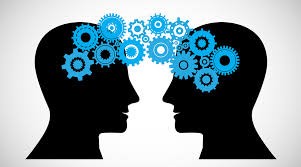
Knowledge Management (KM) is broadly defined as the process of creating and sharing information across the organization. Its goal is to enable learning. KM became a formal business disciple in the 1990s even though it dates back centuries. I believe that project management follows the apprenticeship model.
Throughout my management career, creating a learning environment for my teams has been a constant pursuit, and often a challenge. Over time, I realized that the obstacles were due to my approach, which was not well suited to creating a wise organization.
I kept building systematic and codified processes. We developed procedures and guidelines, knowledge sites in Lotus Notes, SharePoint, and wikis. These approaches were well suited for sharing explicit knowledge. However, I wanted to share tacit knowledge, which is experience and wisdom.
Explicit knowledge is rule-based processes and procedures. Creating and maintaining these guides, desk procedures, and job aids are straightforward, albeit time-consuming. Periodically, the staff was assigned to review and update the material. Significant effort was expended, but the payback was low.
Few employees used these tools after their initial onboarding and orientation. Learning the mechanics of the role was the only tip of the iceberg. Within a few months, most people could execute rote procedures. However, I wanted them to possess a more in-depth understanding.
Tacit knowledge is based on personal experience, judgment, and wisdom, which is difficult to articulate, document, and share. Tacit knowledge guides decision making when choosing between shades of gray, or triaging based on fuzzy logic and pattern recognition. It is the ability to synthesize and integrate conflicting information or competing demands.
A successful knowledge management program blends explicit and tacit knowledge. Explicit knowledge creates the operational foundation of what to do. Without these guidelines, organizations will be continually reinventing the wheel, which is both inefficient and leads to inconsistent outcomes. When tacit knowledge is broadly shared, it becomes a force multiplier. The organization is more vibrant and resilient as it extends its ability to manage complexity.
How We Learn
First, we need to understand how adults gain knowledge. In the 1950s, Malcolm Knowles developed his theory of learning, which recognizes that adults learn differently than children. Adults prefer to play an active role in the process. Effective programs acknowledge and accommodate these different styles:
- Visual learners prefer to see a process demonstrated;
- Auditory learners prefer to hear a process described and actively ask questions; and
- Kinesthetic learners primarily learn by doing.
Effective KM programs are multi-modal and designed for how people prefer to learn. This requires developing written documentation, delivering in-person and computer-based training, and creating opportunities to practice and experiment.
Explicit Knowledge
Creating a set of tools, templates, and guidelines builds explicit knowledge and is the prerequisite for establishing consistent, repeatable processes. Without a de minimis level of standardization, managing even a small organization will become complicated as many practices evolve. In most knowledge-work environments, these consistent practices should be treated as guides rather than regimented standards.
Process documentation and knowledge management tools should be lightweight, and a means to an end. Compiling and maintaining our knowledge artifacts requires significant effort. To remain fresh, the information needs to be regularly curated. A year after building a knowledge base, we found that nearly 80% of the articles were already outdated.
The goal is not to create voluminous documentation and artifacts, instead, we should follow the principle of creating minimally sufficient documentation. Experience and studies show that people are more likely to consult a peer or their manager than rely on formal materials.
Tacit Knowledge
Tacit knowledge is best transmitted person-to-person. Humans are hardwired to share experiences and knowledge face-to-face. Storytelling is how our ancestors passed along traditions, values, and life skills.
The Agile Manifesto recognized the import of direct, personal collaboration and communication. In small, collocated teams, experience and wisdom are easily transferred. People are either directly part of the experience or indirectly gain knowledge through osmotic communication.
When teams are large or distributed, building the connections that foster the sharing of tacit knowledge requires effort and needs to be actively encouraged. Here are some suggestions for creating a learning community.
Peer Cross-Training Experiences
We want to develop personal connections and learning experiences within the team. We want to create both formal and informal networks where knowledge and wisdom are shared, which provides members with:
- An accessible web of peers to solicit advice,
- Opportunities to safely explore new ideas,
- Informal opportunities to develop new skills, and
- A stronger connection to the overall organization.
There are several ways to create these peer experiences, including:
- Promote cross-training and periodically shift peoples’ roles or assignments, for example, once a year, have team members shift into an adjacent position. Use a shadow-reverse shadow transition model. This creates organizational resiliency, increases employee skills, reduces boredom, and shares knowledge;
- Paired-programming is an agile practice where two people work together to write software code. By working in pairs with a “driver” and a “navigator,” there is a natural transfer of knowledge and experience from one to the other; and
- Building a skills marketplace where team members list the skills they can share and the ones they wish to acquire. Allow people to pair-off to learn from each other.
Lean Coffees
Lean coffees are a great way of having an open, yet structured discussion about items of interest to the participants. Lean coffees blend best practices from structured brainstorming and meeting management.
Lean coffees should be held regularly. Attendance is voluntary. Having a good facilitator keeps people engaged and coming back for more.
At the beginning of the meeting, the facilitator asks people to list topics they want to discuss on Post-It Notes—one item per card. The ideas are then posted on the wall, and people vote on the topics they wish to discuss.
Generally, the meetings are an hour long, and topic selection takes about 10 minutes, this leaves five, 10-minute rounds to discuss. The facilitator selects the card with the highest number of votes and opens the discussion. People can share their experience and ask clarifying questions and then at the end of the 10 minutes, the group moves to the next topic.
The Lean Coffee is meant to democratize knowledge sharing in an open, non-threatening, and informal environment. Anyone can share. Anyone can ask questions.
Team Forums
Establish regular meetings where the objective is to share best practices. These meetings should be an hour-long, required, held weekly or biweekly, and include both programmed and organic learning. Formal learning may consist of “real-life” best practices, “hands-on” presentation of new policies, standards, or tools, or the introduction of new ideas and trends.
Organic learning can include facilitated discussions and question and answer sessions. This learning should be woven into the formal presentation by reserving time for the team to interact with the presenter or share ideas with colleagues. Creating an environment where team members are encouraged and comfortable sussing out a topic builds knowledge.
When I managed a large, distributed project manager organization, we created a weekly PM Forum, the objective was to establish consistent, repeatable processes across the enterprise. With over 170 project managers, we needed an environment where individual, best practices, and solutions to complex problems were quickly disseminated. We could ill afford to have dozens of localized solutions.
Our enterprise governance organization regularly promulgated new policies and standards that were a poor fit for many project fact patterns. We used the PM Forum to present these new rules and discuss implementation practices and options for handling exceptions, thus the Forum was an effective knowledge management tool. We communicated the explicit information (the new standards) and provided the opportunity to share the tacit knowledge (implementation options and best practices).
Lessons Learned
Sir Isaac Newton said, “If I have seen further, it is by standing on the shoulders of giants.” Learning from our predecessors, peers, and our own experience are ways to gain tacit knowledge.
Project post-mortem or lessons learned meetings are great in theory, but often poorly executed. Typically, these reviews are performed after the project is complete and seen as perfunctory. Consequently, few improvements are incorporated into future efforts, so the lessons become shelfware—knowledge that is gained but never applied.
Two fundamental concepts from Lean that can be applied to knowledge management are: are amplifying the learning and continuous improvement.
We can amplify the learning by creating a process where localized knowledge is communicated broadly and in the right context. I initiated a monthly lesson learned review for recently finished projects. Project managers shared universal learning with their peers. We developed a 1-page template and time-boxed the presentations to keep the updates sharp and focused on the practices that were valuable to the entire group. (Details for conducting this meeting are described in a previous article.)
Agile teams use the sprint retrospective to embrace the ideals of continuous improvement. In the retrospective, the team assesses all aspects of its performance—people, process, and technology. Improvement ideas are prioritized and then implemented, this democratizes and simplifies the learning process. It provides the opportunity to experiment and quickly pivot.
Effective knowledge management programs are people-centric. Focus on building relationships and connections and creating opportunities for people to share wisdom and experience. Experiment with ideas that work for your organization and its culture.
© 2019, Alan Zucker; Project Management Essentials, LLC
To learn more about our training and consulting services, or to subscribe to our Newsletter, visit our website: www.pmessentials.us.
Related Project Management Essentials articles:
- Create a Learning Environment: Profit from Your Mistakes
- Closing the Project: 10 Ways of Embedding Lessons Learned in the Organizational DNA
- Closing a Project: Ask the Right Questions
- Conducting a Successful Brainstorming Meeting
- Project Management: An Apprenticeship Model of Learning
Image courtesy of https://insidesmallbusiness.com.au

